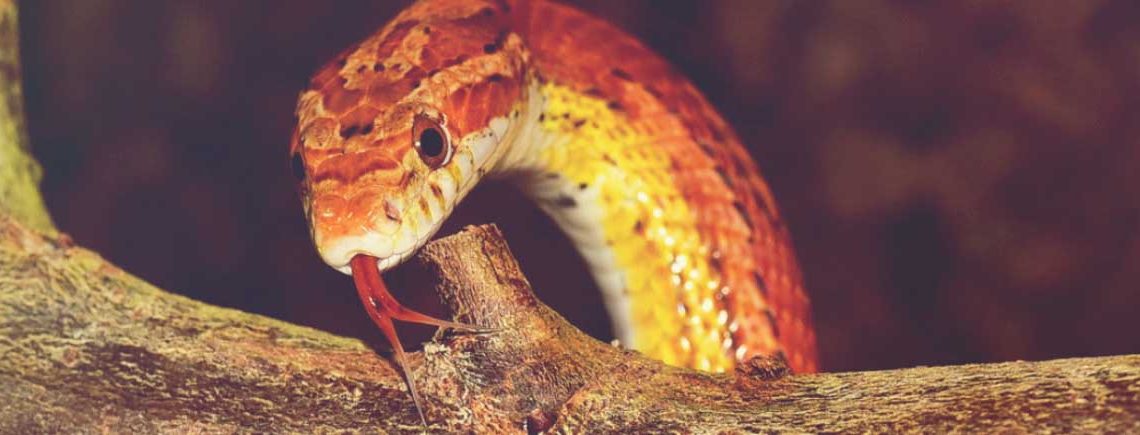How Long Do Pet Snakes Live For?
Snakes make fantastic pets and companions. They offer a rewarding experience, and often build a bond and trusting relationship with their owners. In the wild, they don’t tend to live for more than ten years due to predators and other dangers present. In captivity however, they can live for much longer with the right diet, habitat and care.
In this blog post, we’ll discuss how long snakes live in captivity, the lifespans of different breeds of snake, and how to ensure your snake lives a long, happy life
A Pet Snake’s Lifespan in Captivity
Much of a snake’s lifespan in captivity will depend on their owner’s level of care. A responsible owner can extend their pet snake’s lifespan by several years, by ensuring their enclosure is clean, the correct temperature and humidity is set, and their snake is properly fed. Often, the larger a snake will grow, the longer it will live.
Snakes can sometimes (rarely, but it happens!) live up to 20 years. If you’re planning on buying a pet snake, make sure to be prepared for your reptile friend to be in your life for the next two decades.
Different Breeds’ Lifespans
Corn Snakes don’t live very long in the wild, usually not lasting longer than 6 years. In captivity, they are very long-lived, and it is not unusual for them to live into their twenties.
Ball Pythons live between 10-15 years in the wild, but can often reach up to 50 years old in captivity when cared for extremely well. The average lifespan for a pet ball python is usually 30 years.
Boa constrictors have a captive life expectancy of 20 to 30 years, with rare accounts over 40 years, making them a long-term commitment as a pet. They tend to live about 15-20 years in the wild.
Kingsnakes can live 15-20 years in captivity. In the wild, their lifespan is reduced to about 10-15 years.
Garter Snakes can live for 10-15 years in captivity. In the wild, their lifespan is quite short, averaging between 4-5 years.
Rat snakes have been known to live up to 15 years in captivity. Breeding females may actually have a shorter life expectancy.



Keeping Your Snake Happy
For your pet snake to live a long and happy life, it is important that he is given the correct care and attention.
1.Make sure that they are in the correct sized vivarium with a secure top. Allow a minimum of 1 square foot to each foot long your snake is. A hatchling snake could become stressed if placed in a large vivarium, so make sure they are housed in a small enclosure and move up a size as it grows.
2. Snakes are poikilotherms, which means they can’t regulate their own body temperature. They use the environment they are in to keep themselves warm or cool, and require a ‘thermogradient.’ This means that you will need to place a guarded heat lamp at one end of the vivarium so your snake can keep warm, while using the other end of the enclosure to cool down. This will allow the snake to move around and regulate his own temperature. Keep the hot end at around 27 – 30⁰C, and the cool end around 20 – 24⁰ The lamp must be guarded to prevent burns or any other type of injury.
3. Setting the correct humidity is important to ensure your snake’s respiratory system is healthy and for a good skin shedding cycle. A hygrometer, like EXO TERRA Hygrometer monitors the vivarium humidity levels, which should be around 40 to 50%. If it is too high, your vivarium will need more ventilation.
4. Ensure you clean the habitat regularly. Remove faeces and soiled bedding as necessary, and if your snake defecates in its water bath, it should be disinfected straight away. A full deep clean every four weeks, with a mild disinfectant will ensure your Snake remains healthy.
5. Hand washing is very important when owning any reptile. Washing your hands before and after handling your Snake will help keep you and your pet healthy. If you wash your hands before handling you reduce the risk of passing anything on to your pet.
6. Make sure that there are accessories included in your snake’s habitat. Strong branches, and sheltered hides will be needed for your snake to feel safe and well.
7. Good ventilation is important in your snake’s enclosure to prevent an accumulation of harmful bacteria. It should be made from a solid material that is simple to clean and can keep heat in.
8. The correct diet for your snake is very important to his health. All snakes are carnivores. Snakes will mainly feed on thawed out rodents such as mice or rats. A healthy snake will usually eat one meal about every 2-4 weeks. Defecation usually occurs after every 3rd meal. We recommend conducting research on your specific breed of snake for a full dietary plan.
9. A dish must be provided for drinking, filled with clean, fresh water. Make sure it is replaced at least daily.


